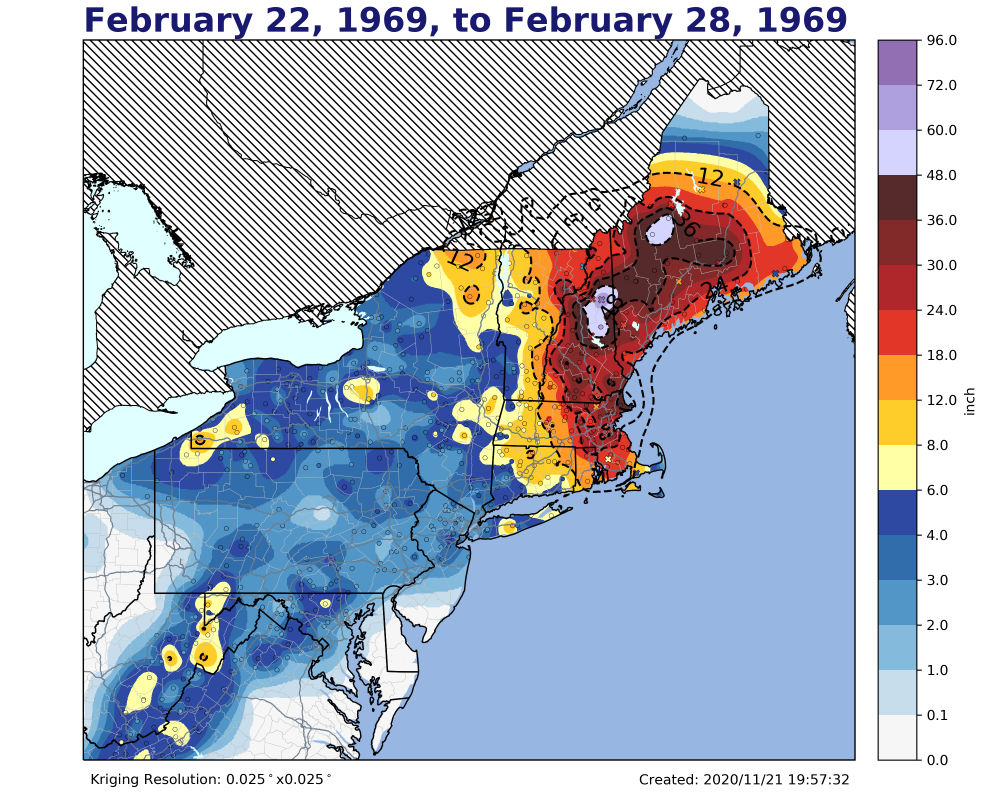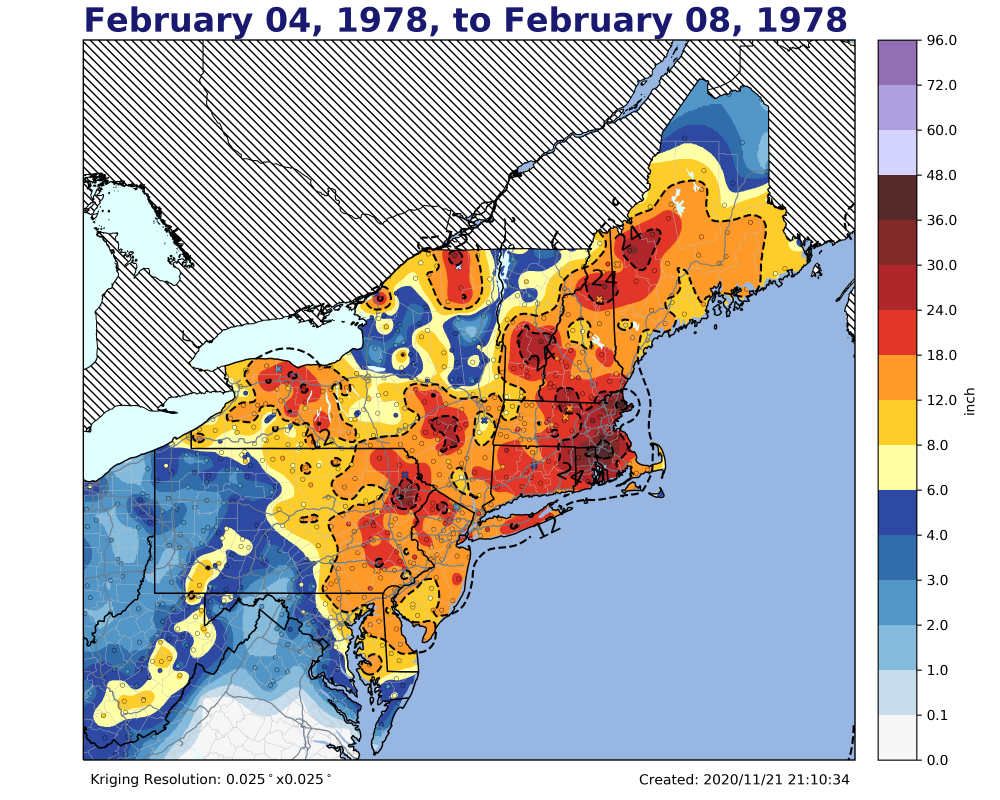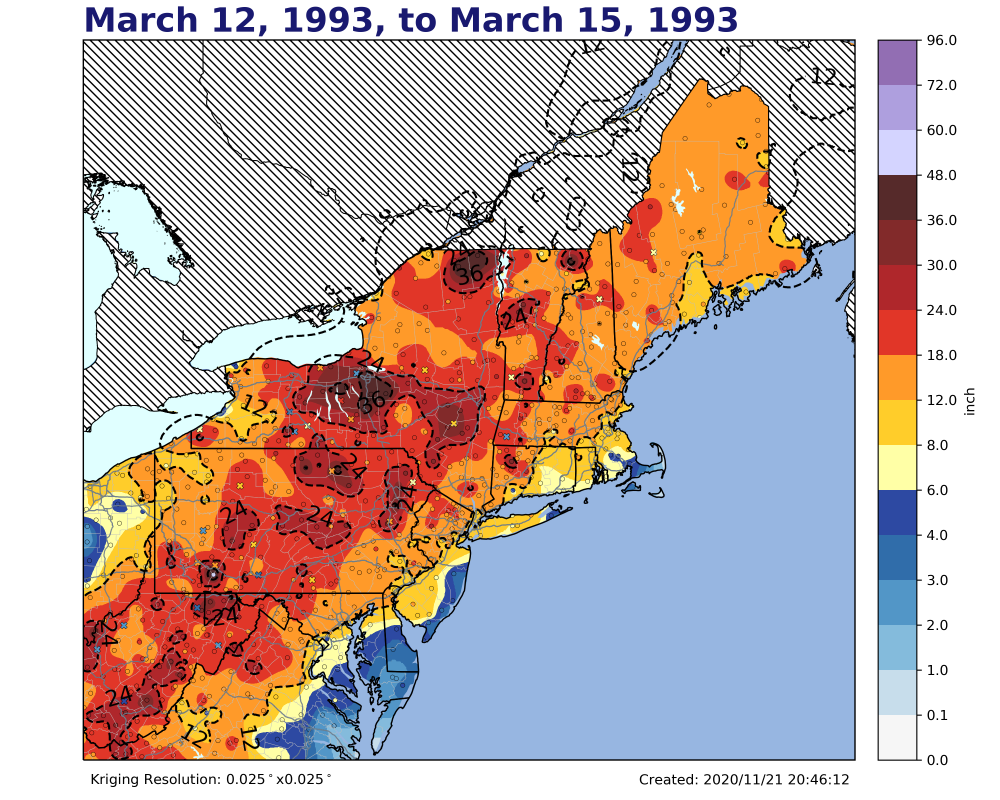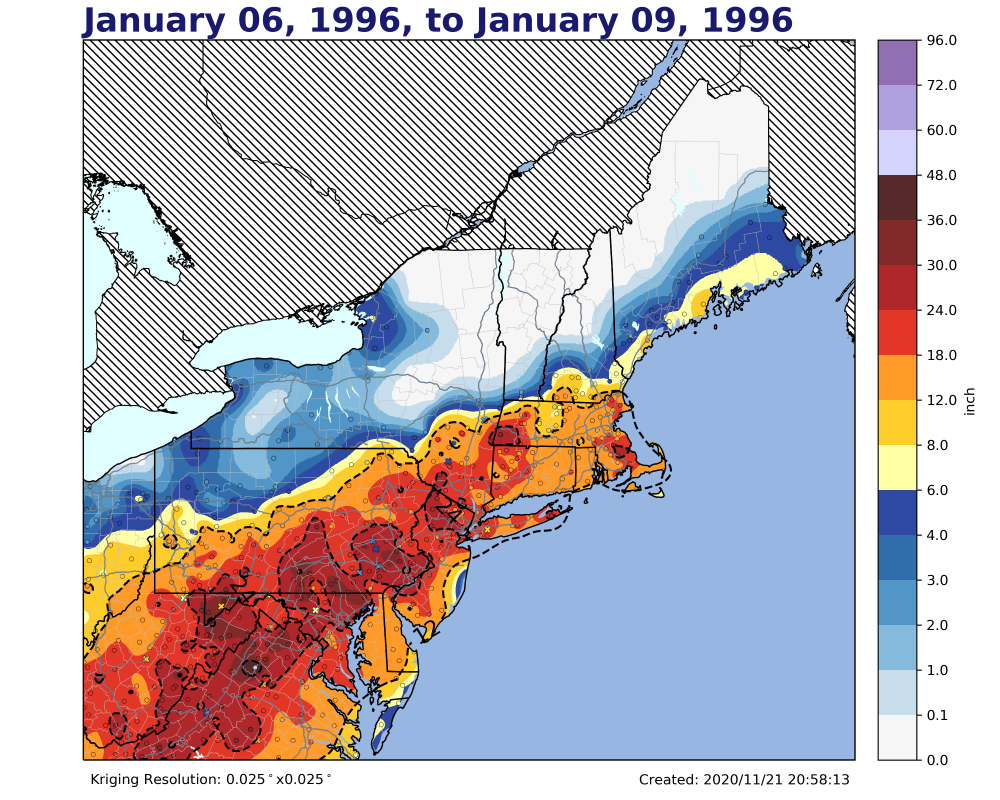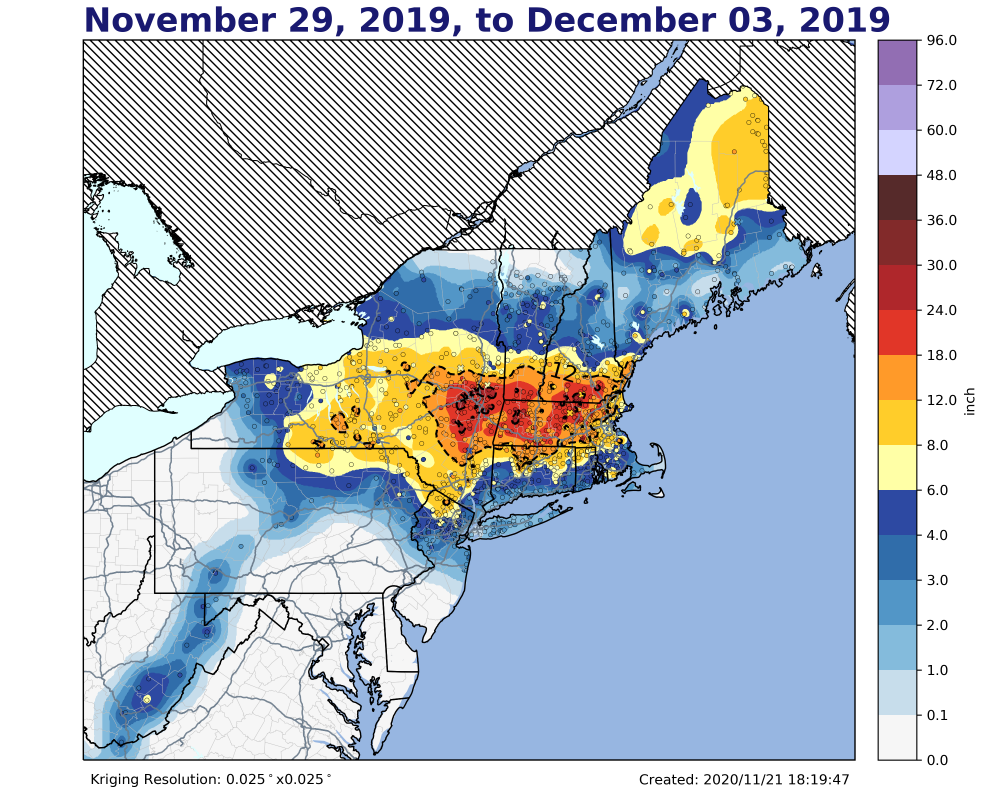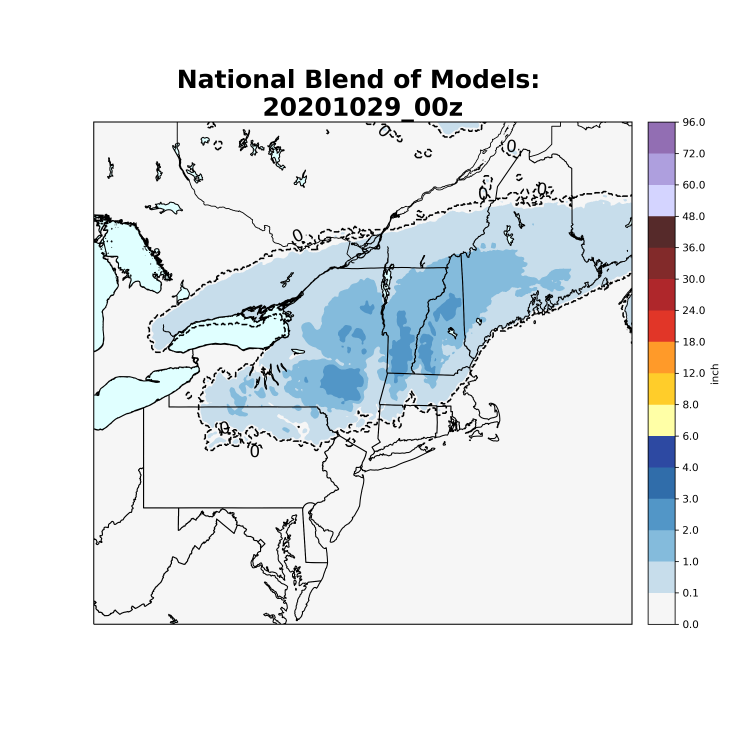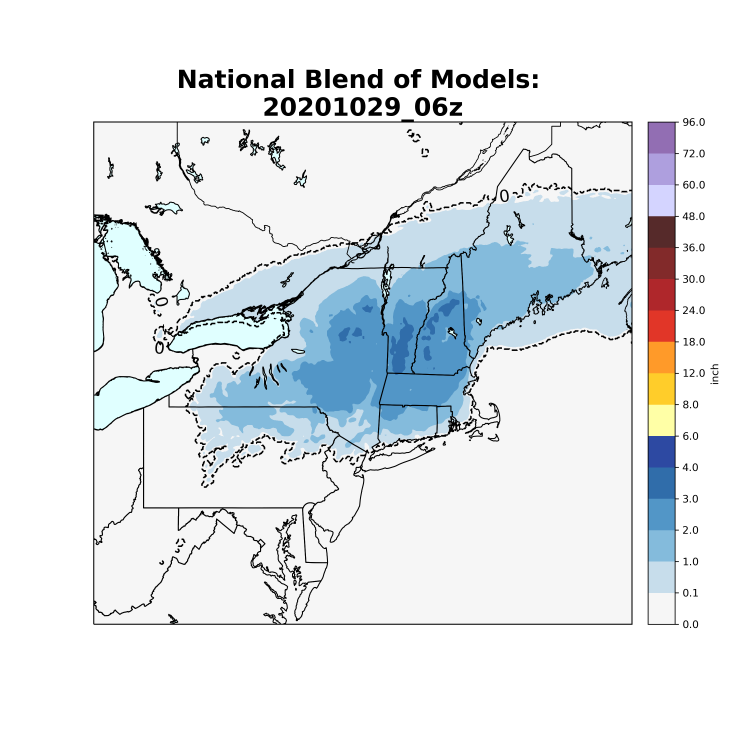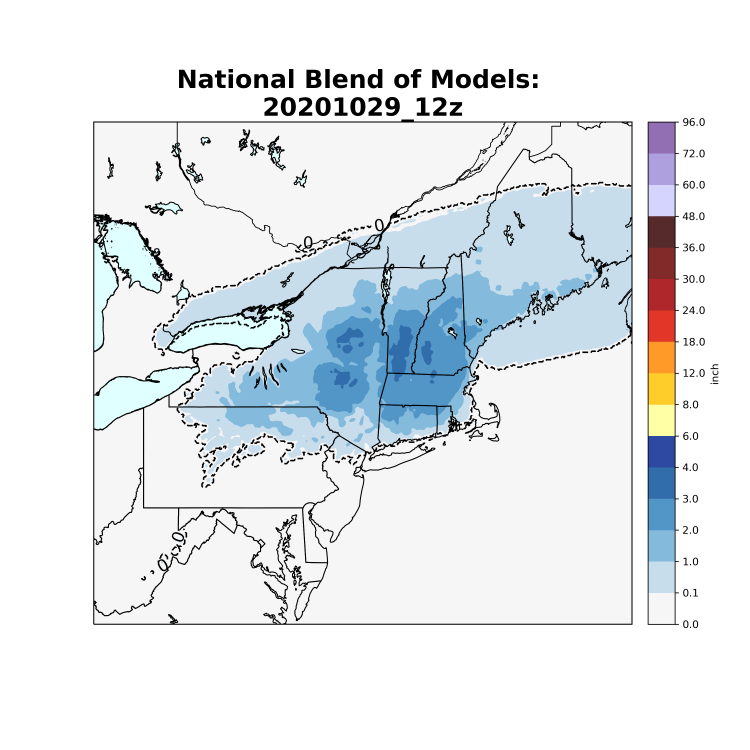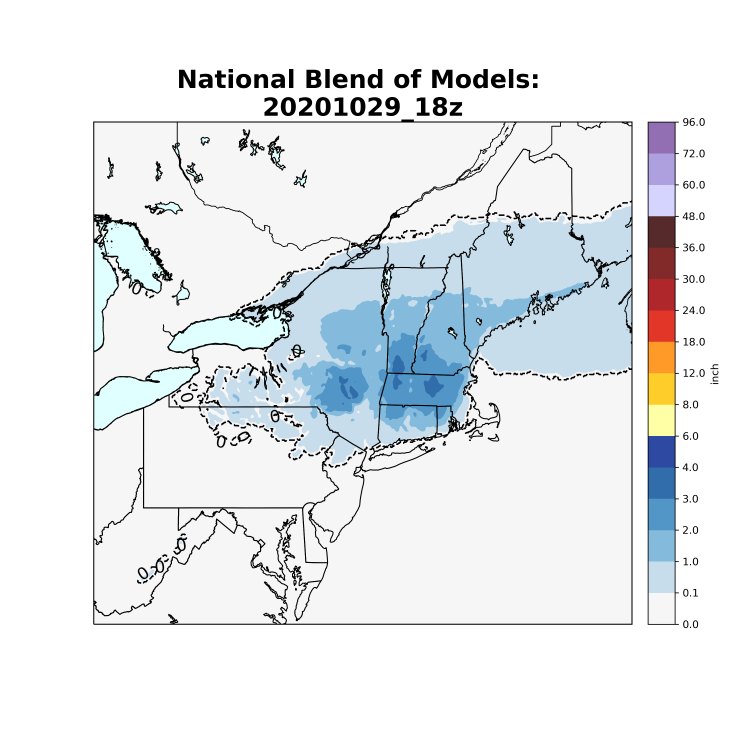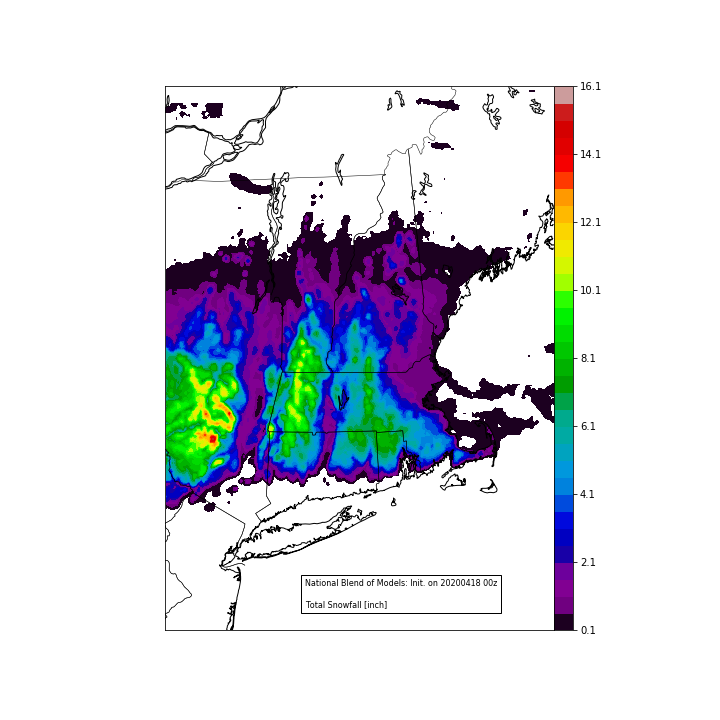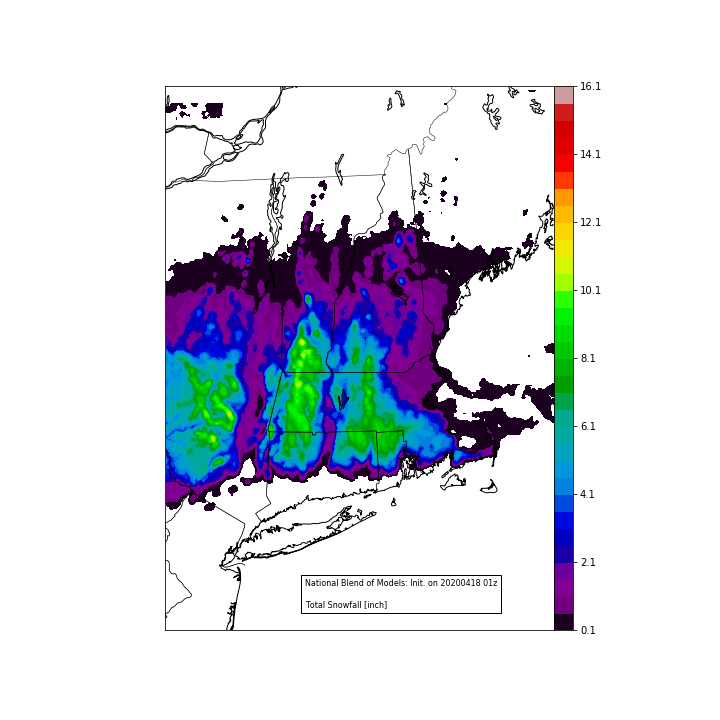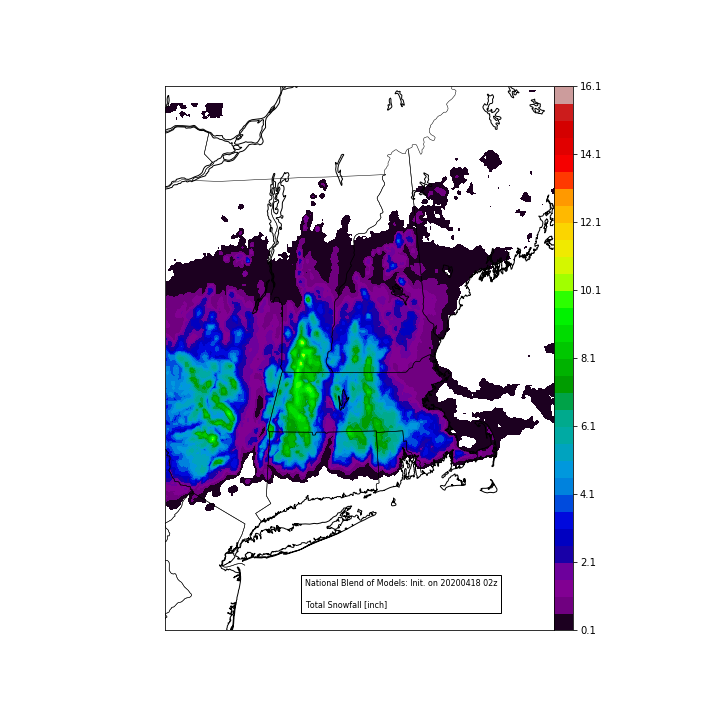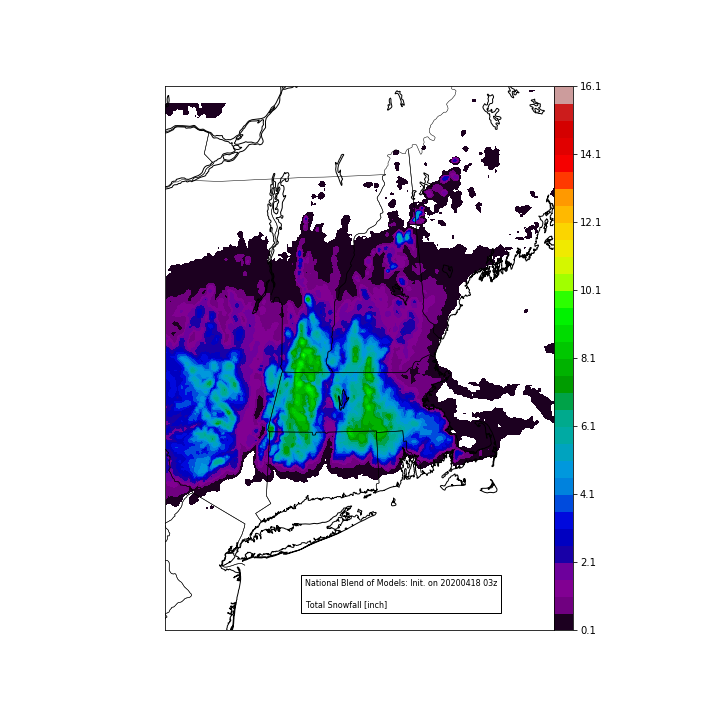-
Posts
478 -
Joined
-
Last visited
Content Type
Profiles
Blogs
Forums
American Weather
Media Demo
Store
Gallery
Everything posted by MegaMike
-

Active mid December with multiple event potential
MegaMike replied to Typhoon Tip's topic in New England
Different plotting scheme... Pivotal defined their bins from -60 to +120 w/increments of 1 (approximating here) so 180 different bins in total. StormVista defined their bins from -40 to +120 w/increments of 5 (32 total bins). Since Pivotal plots their images with more bins, it appears finer than StormVista's plots. Assuming that both brands are plotting the same model without interpolating, there should be no difference. -

December 5-6, 2020 Storm Observations and Nowcast
MegaMike replied to Baroclinic Zone's topic in New England
Is that near the Frog Bridge? I lived on Jackson St. several months ago. Meanwhile, I'm in West Boylston, MA for this event. I'll be moving to NC soon so I wanted to savor this [possibly] final snow event before I leave New England. ~3/4 inches of snow on the ground w/medium sized flakes. It has been snowing since roughly 10(ish)AM. -
Good call (assuming it's a dam). I had to find the point manually, but it led me to the following metadata regarding that station: GHCND_IDENTIFIER, LAT, LON, ELEVATION_m, STATE, STATION_NAME USC00173588 45.4586 -69.8653 253.0 ME HARRIS STN If you're curious, that location observed 60 inches of snowfall for the denoted time range. The maximum for this event occurred at Pinkham Notch in New Hampshire. I might remove it from the map since it's pretty absurd or too wildly epic. The station observed 108 inches of snowfall which is 38 more than any other station lol. It was an "outlier," but based on the location, I kept it.
-
Good to hear! I ran the interpolation for all events listed here < https://www.ncdc.noaa.gov/snow-and-ice/rsi/societal-impacts > for the NE US. So there are 211 in total. I'm iterating from highest to smallest RSI (the sum of area/population impacted by climatological snowfall thresholds). At the moment, I have 19930312_19930315, 19960106_19960109, 19780204_19780208, and 19690222_19690228. I'm hoping I'll get some feedback for the interpolations (such as additional observations or ideas... The 4 Seasons!!!). I fully expect to redo some of these images to make them more accurate for my ultimate analysis. I'm surprised how detailed the GHCND archive is though. There's plenty of observations since 1900 for our area. Northwest Maine was the only exception so I had to be creative for that region. I could look at other historical events too. I just need the start and end dates (even dating back to 1900). Here are the final images I'll post until the other images process and I decide where to put them.
-
Great! Thanks, Will! dendrite, you can PM me.
-
Thanks! I tried to superimpose the observations onto the map, but it caused too much clutter. It was impossible to view numeric observations clearly. That's why I chose to use a color scale for the symbology instead. I can add the text, but I'd have to focus on smaller territories as you mention. Is there a place I can store these plots somewhere in the forum (maybe a new thread)? I have 208 other plots I'd like to upload once the script finishes.
-
Hey guys, I wanted to ask, would you change the formatting of the attached snowfall () map? If there's anything that you'd add, remove, or edit, please let me know. I'm prepared to batch over 200 other snowfall interpolations (1900-now) that I created using GHCND/PNS observations and Python's PyKrige library (https://pypi.org/project/PyKrige/). I'd like to keep a gridded historical archive for other purposes as well. For example, I'd like to 1) create plots for the number of occurrences of 4+,10+,etc... events (on a 0.025x0.025 degree grid) ...and... 2) determine the maximum snowfall amount and index the event for all locations (on a 0.025x0.025 degree grid) This isn't work that I plan on publishing since there are other agencies with similar and likely, more accurate plots (NWS offices, https://www.nohrsc.noaa.gov/snowfall_v2/, and https://www.ncdc.noaa.gov/snow-and-ice/rsi/nesis). I created these interpolations to conduct an analysis on a constant grid. I'll admit, I did it for fun too! I may also create a large poster of all plots altogether . Anyways, I decided not to plot the legend. The plot's elements are: shaded circles: GHCND/PNS (I added PNS observations when/where applicable) observations. shaded crosses: GHCND/PNS observations that were determined to be spatial outliers... I found outliers using a methodology similar to this one < https://pro.arcgis.com/en/pro-app/tool-reference/spatial-statistics/h-how-cluster-and-outlier-analysis-anselin-local-m.htm > using a 50km search radius, IDW weights to the 2nd power, and z-scores of -1.280 and 4 (assuming a normal distribution). shaded: Kriging interpolation onto a 0.025x0.025 degree grid light blue shade: Lakes (from https://scitools.org.uk/cartopy/docs/v0.14/matplotlib/feature_interface.html) dark blue shade: Atlantic (from https://scitools.org.uk/cartopy/docs/v0.14/matplotlib/feature_interface.html) gray segments: Interstates I also added shapefiles for Canada's provinces, USA's states, and USA's counties. Ideally, the observations should match the color of the shaded interpolation.
-
Nobody gives the NBM the love it deserves! Compared to the 10:1/Kuchera SLR algorithms, the NBM (conceptually) is far superior (especially compared to deterministic output). For details, visit this link: https://www.meted.ucar.edu/winter/nbm32winter/. You'll need to create a free account to access the module, but it's worth it! Essentially, SLR's are computed from deterministic/ensemble output via multiple SLR algorithms weighted differently by modeling system(s)... The Cobb SLR algorithm IS incorporated into NBM's snowfall computation (including 3 other algorithms). I still can't find a public website that provides graphics for the NBM so I'll attach today's 00z, 06z, 12z, and 18z snowfall accumulation plots here. It's straightforward to get and process: 1) Access the 'http://nomads.ncep.noaa.gov' server utilizing a URL to 'request' output from a specific model run. As an example, http://nomads.ncep.noaa.gov:80/dods/blend/blend20201029/blend_1hr_00z will obtain NBM's 2020-10-29 00z simulation (1hr time-steps). 2) You'll get all of NBM's variables for all times on a lon/lat grid once you obtain the JSON file... Extract the accumulated snowfall variable called, 'asnowsfc' (for the final available hour) then convert mm->inches. 3) Plot the data using optional mapping resources. It takes a while to make it look pretty, but overall, it's not too difficult. If anyone wants to view the script, PM me! I'm uploading my graduate school script to GitHub. Anyone can access/use it if they'd like.
-
MET courses are basically applied mathematics/physics courses. If you cannot understand mathematical and or physics concepts, you'll likely struggle in all MET related courses. Even though you didn't ask, I'd recommend taking calculus (and or differential equations) at a community college before committing to a MET program (if you're not feeling confident). This will help you gauge the waters of the curriculum. In my opinion, most people can succeed in all MET, mathematics, and physics courses as long as they work hard and do not quit. Q. "What else should I expect assuming I'm able to at least have a basic comprehension of the calculus classes?" A. Expect mathematical terminology within most MET equations. For example (QG theory), know what a partial derivative/del operator is and how to apply these terms within a finite area/volume < https://www.meted.ucar.edu/labs/synoptic/qgoe_sample/index.htm#:~:text=The Quasi-geostrophic (QG),analyses at different pressure levels > "Are the calculus equations the most difficult part of MET courses or are there other stuff that could pose an even greater challenge for a student?" A. No... Differential equations is the most "difficult" part of MET courses. They don't get too complicated though so I wouldn't worry about it. Just focus on the mathematics curriculum. Q. "Are the physics courses just as difficult?" A. Absolutely not. Not for me anyway... Again, just focus on the mathematics curriculum. Q. "For a long term goal, I'd be more interested in Broadcast Meteorology, does a bachelor's degree suffice or is grad school pretty much expected for the career?" I know a lot of colleagues who are broadcasting (as meteorologists) at the moment. Three of which declared ATM as a minor... They're all doing well. You can always get a bachelor's degree in television studies (broadcast concentration) and get a minor in ATM.
-

Summer 2020 Banter and random observations
MegaMike replied to Baroclinic Zone's topic in New England
Yup! That sounds like you already have it installed. You can install/configure certain libraries and modules using conda (windows terminal) and pip (anaconda terminal) for Jupyter Notebook. I faced similar issues when I first started scripting. Basemap took a lot of time to install/configure... Overall, it took me ~1 year of constant scripting to understand Python pretty well. I started with MATLAB, but decided to move to Python since the script is compatible w/Linux (plus all of the utilities!). I'm sure you can find a Python class as it relates to meteorology, however, I learned Python best by writing script that I was interested in. My first script I created was 1) obtain GHCN-D snowfall observations then 2) identifying suspicious observations using a spatial outlier algorithm. The intent was to use it on observations that were provided by members of this forum so I can label weenies w/statistical support -

Summer 2020 Banter and random observations
MegaMike replied to Baroclinic Zone's topic in New England
Anything is possible with Python! That is what my script does (.csv output), but I only consider liquid water equivalent, snow water equivalent, and snowfall. The good thing about Python is that there are utilities/modules/etc... that already exist that you can install then run pretty easily for specific datasets. For example, for GHCN: https://github.com/aaronpenne/get_noaa_ghcn_data... Avoid any utility or archive that requires you to pay. This data is public. I'd suggest installing Jupyter Notebook. https://jupyter.org/ It's basically a (somewhat) interactive interface that runs Python script. It comes with a lot of pre-compiled modules and libraries too. You can message me if you'd like more details or run into any problems. -

Summer 2020 Banter and random observations
MegaMike replied to Baroclinic Zone's topic in New England
If you're looking for max/min's (temperature, wind speed, wind gust, etc...) and or precipitation, GHCN-D is great. I'm not sure if there's an interactive website that hosts this data though... I use Python script to extract daily observations by station and date. https://www.ncdc.noaa.gov/data-access/land-based-station-data/land-based-datasets/global-historical-climatology-network-ghcn -
I've been asked to evaluate the National Blend of Models for its accuracy in terms of snowfall. As a side task, I wrote Python script to plot snowfall accumulations for the most recent NBM cycles (00z, 01z, 02z, and 03z). They look pretty bullish compared to other models, but spatially they look pretty similar (higher impacts in western MA and the Worcester hills). I'm looking forward to seeing how well they perform. I hold the NBM to high standards although its snowfall accumulations (in my opinion) look too high for this event. If anyone's interested, most operational NWP products are available via the NOMADS server <nomads.ncep.noaa.gov>. In the future, I'll make my plots nicer, but for the time being, it's not being used by a third party so :shrugs:
-
I really like your graphics, The 4 Seasons! Are your interpolations done manually? Also, what program/software do you utilize to create your graphics? Some recommendations/suggestions (in case you erased your inbox): If you're looking for pre-1993 observations, try getting your data via the Global Historical Climatologist Network (GHCN). You can get snowfall totals (and what not) from 1973-today (for in-situ/surface stations). If you want snowfall totals for specific events, you'll have to sum daily snowfall accumulations for 't' # of days and for 'n' # of stations. Conveniently, the data is quality checked! Here's the URL: ftp://ftp.ncdc.noaa.gov/pub/data/ghcn/daily/ Personally, I like working with the yearly ('by_year') .csv files. Last thing, if you're using crowd sourced data, I'd recommend processing the data through a spatial outlier test. The "Local Anselin Moran's" algorithm can be used to scientifically eliminate suspect/faulty observations. Michael Squires (created the Regional Snowfall Index scale =~ NESIS ) used this method for his research. Algorithm details: https://pro.arcgis.com/en/pro-app/tool-reference/spatial-statistics/h-how-cluster-and-outlier-analysis-anselin-local-m.htm If you're interested, I wrote script for Moran's algorithm utilizing Python.
-
Mainly FORTRAN (great program for running numerical computations) on a Linux OS. When it comes to post-processing data; NCL, REVU, MATLAB, and or PYTHON.
-
Hello,
Please read my comment that I posted to your 'stock market' related thread!

-

March 12/13/14 Blizzard/Winter Storm/WWA etc
MegaMike replied to Bostonseminole's topic in New England
Meh. They were in between bands for most of the event. I don't think they ever got into the mega band, either (by a few miles). I'm glad I'm in RI for this event instead! -

March 12/13/14 Blizzard/Winter Storm/WWA etc
MegaMike replied to Bostonseminole's topic in New England
There are three observations of 8+ inches of snow already. North Dighton, MA (8.2/9:38am), Acushnet, MA (8.0/9:45am), and Burrillville, RI (8.0/9:12am). It seems like most of interior SE MA and RI have snowfall accumulations between 4-8 inches atm. -

Simple Visual Comparison B/N The Blizzard of 2005 vs 2015
Images added to a gallery album owned by MegaMike in Members Albums Category
I added this by mistake, but I may as well finish this thoroughly. I'll label everything properly. All eight images are comparisons between the Blizzards of 2005 and 2015. I have two images for the following: Mean Geopotential Height (at 500), Trajectories (origin of cold air), Mean 5mb)rface Temperature, and Surface temperature Anomaly.


